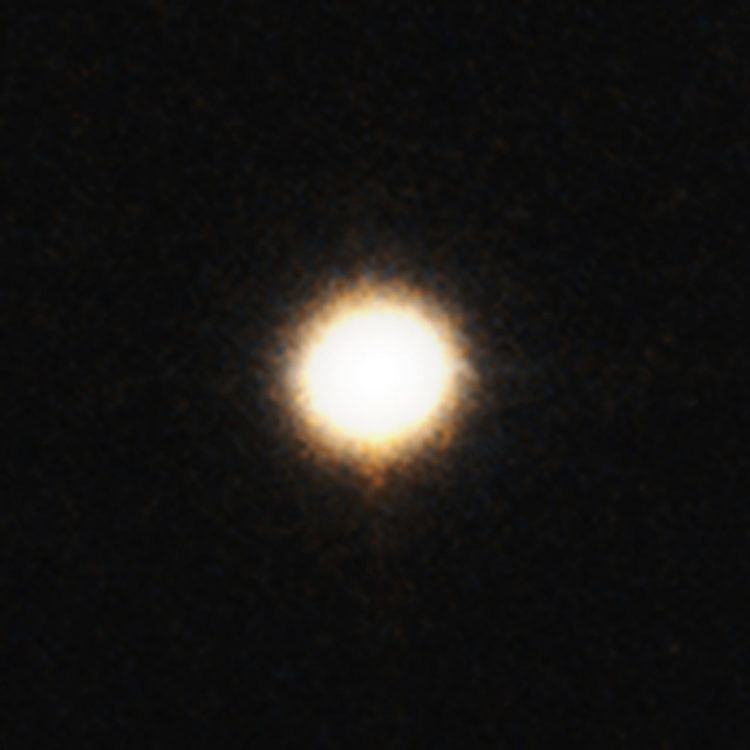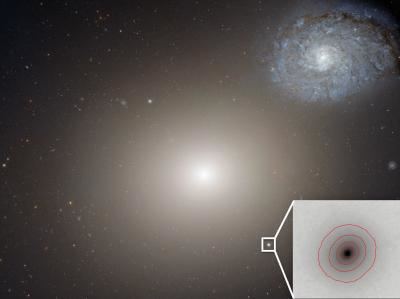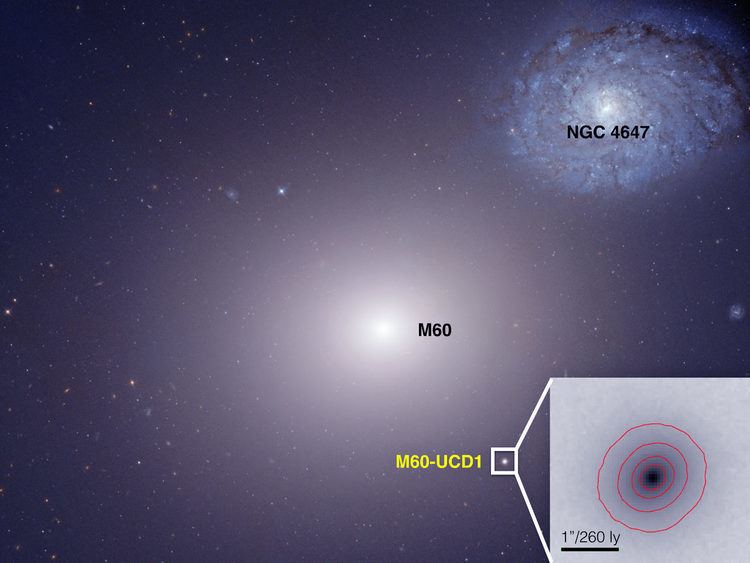Right ascension 190.8999 Helio radial velocity 1290 ± 5 km/s Absolute magnitude (V) 14.2 | Declination 11.5347 Distance 54 Mly(16.5 Mpc) | |
 | ||
Size 158 ± 3 ly (diameter)(24.2 ± 0.5 pc half-light radius) Similar Messier 60, NGC 7793, Abell 1835 IR1916, Arp 271, Eyes Galaxies | ||
Video simulation showing artist s impression of dwarf galaxy m60 ucd1 s formation
M60-UCD1 is an ultracompact dwarf galaxy. It is 54 million light years from Earth, close to Messier 60 (M60, NGC 4649) in the Virgo Cluster. Half of its stellar mass is in the central sphere 160 light years in diameter.
Contents
- Video simulation showing artist s impression of dwarf galaxy m60 ucd1 s formation
- Simulation shows how dwarf galaxy m60 ucd1 formed video
- Characteristics
- References

Simulation shows how dwarf galaxy m60 ucd1 formed video
Characteristics

M60-UCD1's mass is 140 million solar masses. Colours and lack of colour gradients indicate a uniform stellar population about 14.5±0.5 billion years old (indistinguishable from the age of the Universe). Their metallicity is similar to that of the Sun. The orbital velocity dispersion of the innermost stars exceeds 100 km/s, due to the gravity of a dense mass concentration. The galactic nucleus contains a bright and variable X-ray source, presumably a supermassive black hole with a mass of 20 million solar masses (15% of the mass of the entire galaxy). With this proportion of the mass of the black hole to that of the whole galaxy, it is one of the most black hole dominated galaxies known.
M60-UCD1 is believed to be the stripped core of a much more massive galaxy, whose mass was stripped in an encounter with M60 some 10 billion years ago. It may yet be absorbed completely by M60, its central black hole merging with M60's as well. The galaxy may have once had some 10 billion stars.
As of 2013, it is possibly the densest known galaxy with over one hundred stars per cubic light-year. As of 2014, it is the smallest and least massive galaxy known to host a central black hole. It is also the most massive ultracompact dwarf galaxy known.
